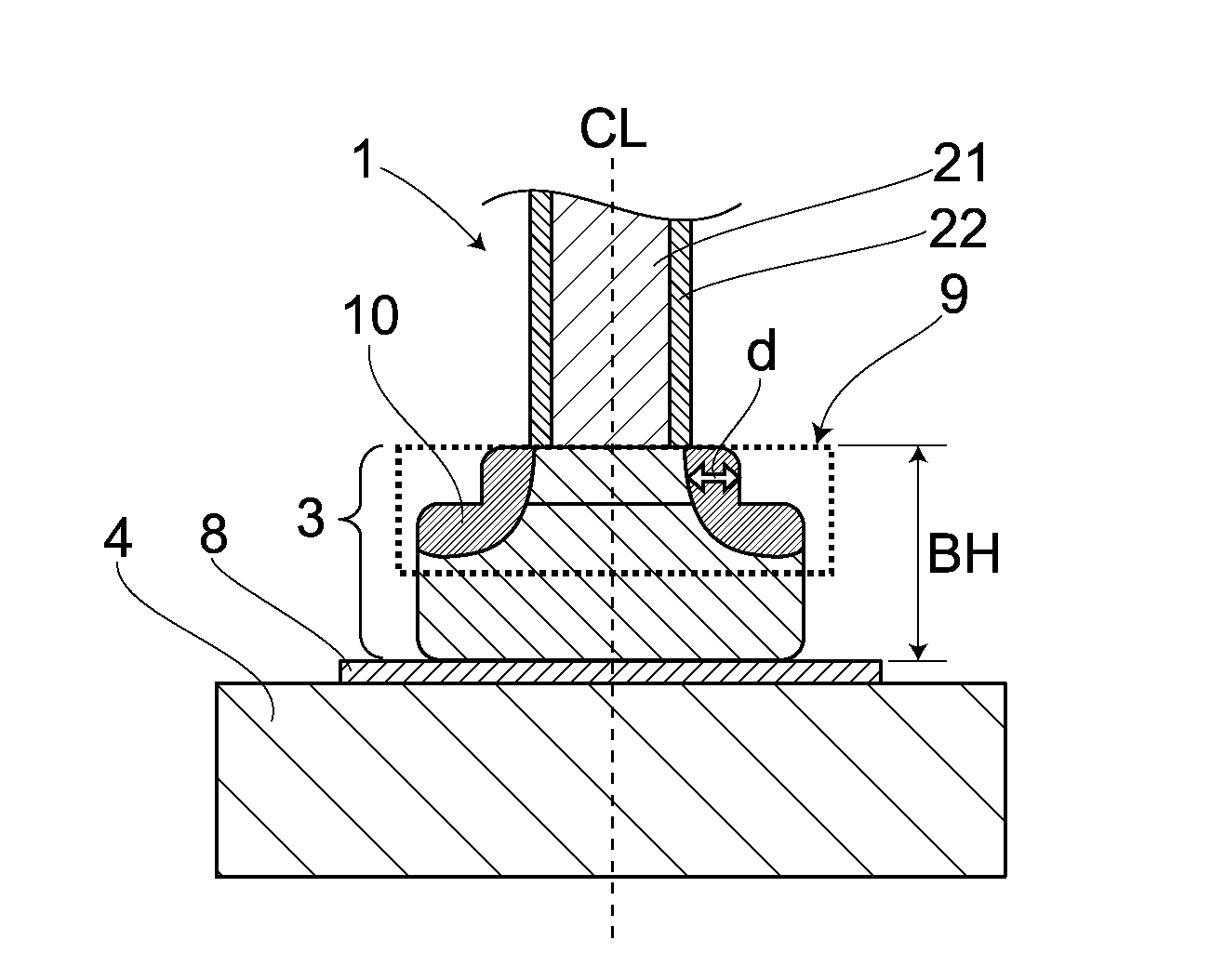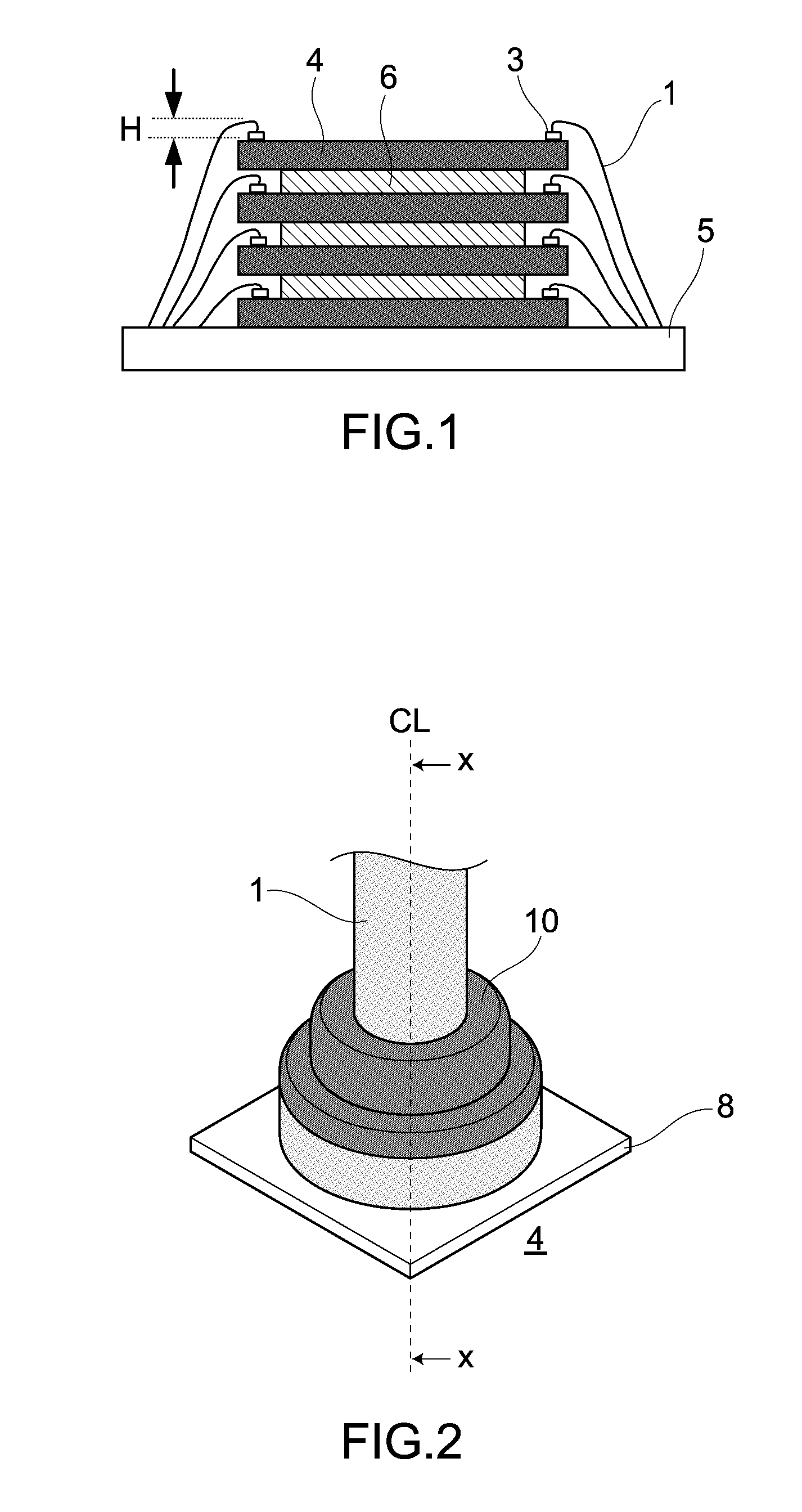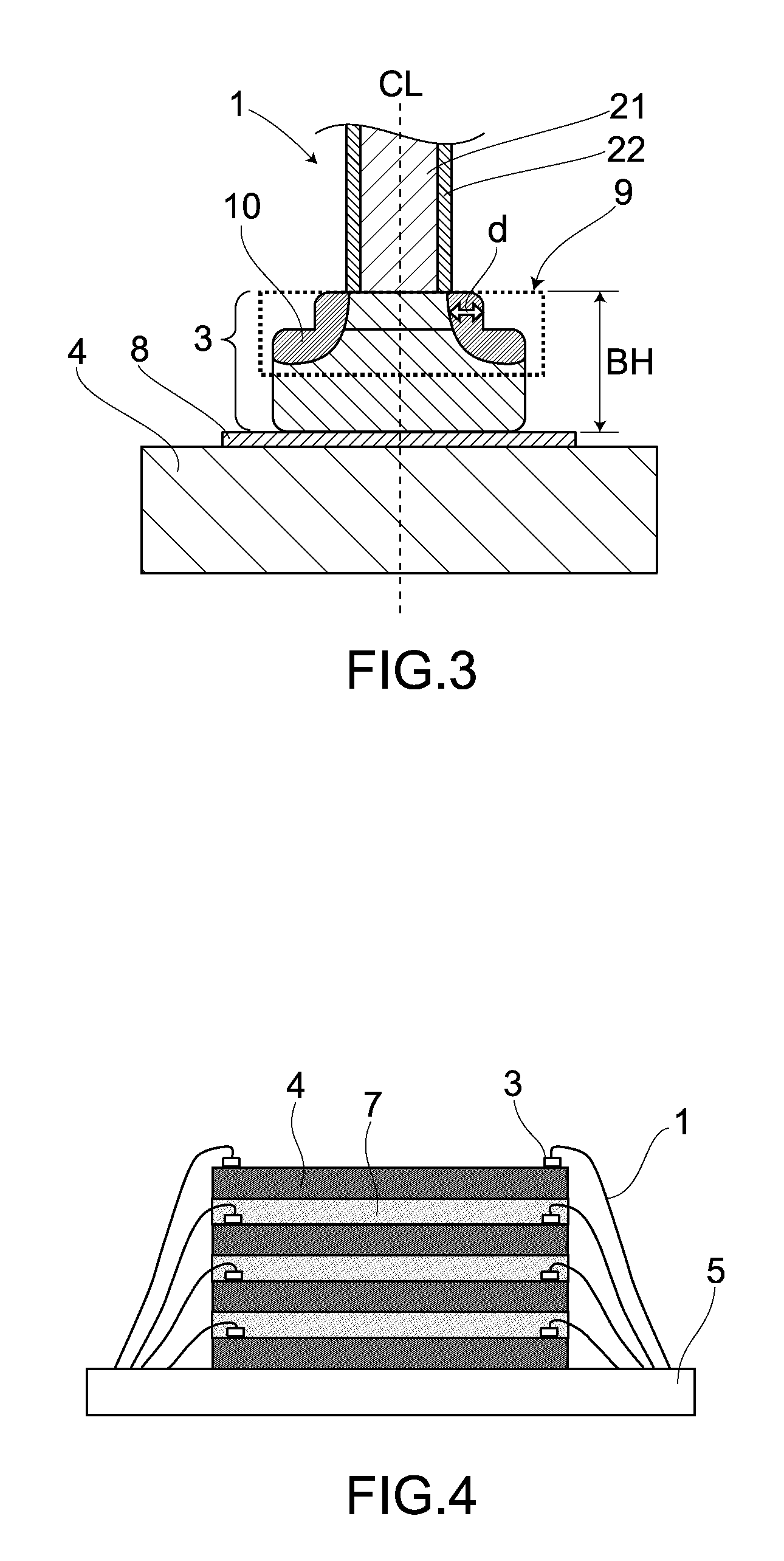Bonding structure of multilayer copper bonding wire
a multi-layer copper and bonding wire technology, applied in the direction of sustainable manufacturing/processing, conductors, final product manufacturing, etc., can solve the problems of low bonding strength, corrosion or the like easily occurring on the wire surface, and the copper bonding wire has not been actively used. , to achieve the effect of superior low loop bondability and ball bondability, and low material cos
- Summary
- Abstract
- Description
- Claims
- Application Information
AI Technical Summary
Benefits of technology
Problems solved by technology
Method used
Image
Examples
working examples
[0105]Working examples are described hereunder.
[0106]Raw materials of a multilayer copper bonding wire were as follows. That is, there was used a Cu having a purity of about 99.99% by mass or higher, which was a high-purity material. As for materials of an outer layer, there were prepared Pd, Au, Ag and Pt, all of which had a purity of about 99.99% by mass or higher. The multilayer copper bonding wire was manufactured as follows. That is, as a core member, there was prepared in advance a high-purity copper wire whose wire diameter had been thinned down to a certain extent. Further, on a surface of such copper wire, there was then formed the outer layer made of a different metal(s), through electrolytic plating. Here, an initial film thickness of the outer layer was calculated based on a thinned film thickness thereof at a final wire diameter. A heat treatment was carried out in a range of 200-600° C., if promoting formations of concentration gradients and generations of diffusion la...
PUM
| Property | Measurement | Unit |
|---|---|---|
| thickness | aaaaa | aaaaa |
| thickness | aaaaa | aaaaa |
| thickness | aaaaa | aaaaa |
Abstract
Description
Claims
Application Information
 Login to View More
Login to View More - R&D
- Intellectual Property
- Life Sciences
- Materials
- Tech Scout
- Unparalleled Data Quality
- Higher Quality Content
- 60% Fewer Hallucinations
Browse by: Latest US Patents, China's latest patents, Technical Efficacy Thesaurus, Application Domain, Technology Topic, Popular Technical Reports.
© 2025 PatSnap. All rights reserved.Legal|Privacy policy|Modern Slavery Act Transparency Statement|Sitemap|About US| Contact US: help@patsnap.com



